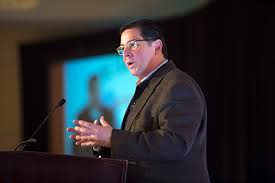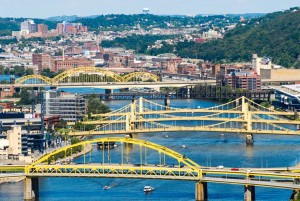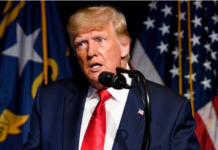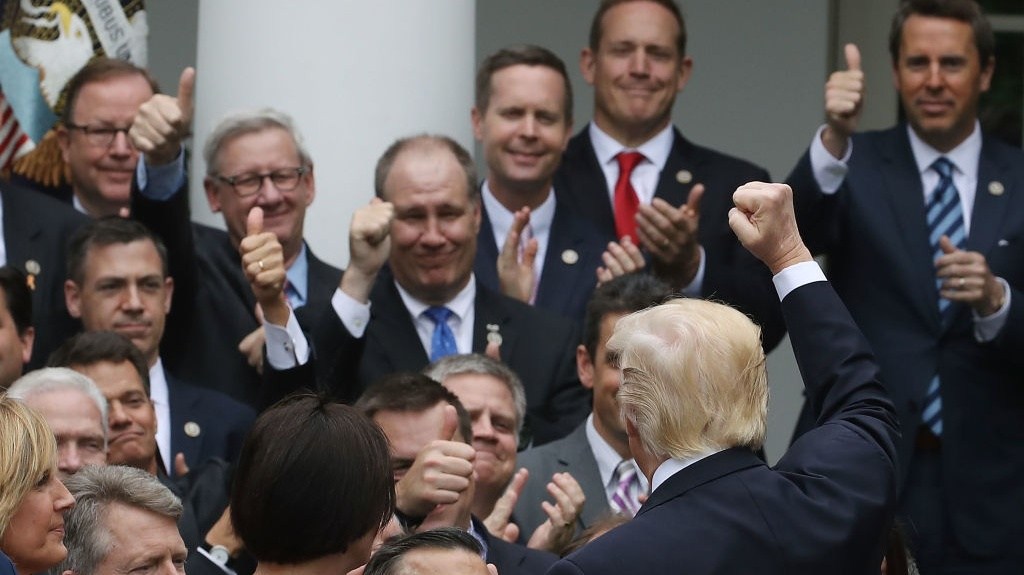
“This is where the world is going -the world isn’t going back,” says Pittsburgh Mayor Bill Peduto. “It isn’t going back to build more highways, it isn’t going back to widen highways. It’s going to find ways for people to get to places smarter, more efficiently, more effectively, more equitably, so that it helps everyone. That is the challenge.”
The United States Department of Transportation has placed Pittsburgh as one of seven finalists in this particular challenge, the “Smart City Challenge,” which will award one US city a total of $50 million in funding through 2018, with $40 million from USDOT, and an additional $10 million from Paul Allen’s Vulcan Philanthropy, to be used to address transportation challenges presented by the rapid growth of mid-sized cities like Pittsburgh.
Pittsburgh will face off against Austin, Texas; Columbus, Ohio; Denver, Colorado; Kansas City, Missouri; Portland, Oregon; and San Francisco, California, cities chosen from the 78 submissions received by USDOT during the initial round of proposals. The seven finalists, announced at the South by Southwest Interactive Festival on March 12, will receive $100,000 in funding to refine their proposals before the May deadline, providing “detailed technical and budget application,” prior to the final selection, expected to be announced in June, 2016.
“Ideally, the winning city will view Intelligent Transportation Systems (ITS), connected vehicles and automated vehicles as the next logical step in its existing, robust transportation infrastructure,” the USDOT says in a description of the program. “It should also aim to have critical systems in vehicles and infrastructure that communicate with each other, allow for active citizen participation, and integrate new concepts that leverage the sharing economy.”
Additionally, the winning proposal will highlight public-private partnerships to address challenges similar to the one Pittsburgh shares with Carnegie Mellon University, which is working with the City on the challenge. The proposal is a continuation of an existing partnership which has already begun to provide high-tech traffic solutions in areas around the City like the SURTEC sensors in East Liberty and Shadyside which evaluate traffic buildups, turning signals green to facilitate the dispersal of traffic queues and lessening pollution from vehicle emissions.
The initial proposal, Peduto says, “basically breaks down into four areas. It’s the modes of transportation and the way we are going to be able to provide them; the technology, and how it can become greater; the ability to overlay transportation with new energy options; and an ‘open platform,’ so the information we create can be shared and used to not only change Pittsburgh, but to change the world.”
“If you look at where we want to get to, Vision Zero is a safety system for all of our transportation, for our streets, where there are no casualties, where people aren’t killed walking down our streets, riding a bike, driving a car,” Peduto says. “A reduction in the emissions of 50 percent by 2030; and corridors of opportunity, creating different areas of the City that have been part of Pittsburgh’s history, part of Pittsburgh’s basic way the City has been growing and developed for centuries, where there are more opportunities” than previously for economic growth.
Peduto says the infrastructure of Pittsburgh was based on a “field to market” economy, with roadways, rails and riverfront traffic patterns designed to move products like steel from the factory to its customers.
“Around the 1950s, with Mayor David Lawrence, we began to think about how to get people downtown, to become a corporate work center,” Peduto says. “In the 1970s, we were the third largest corporate center in the United States. It was New York, Chicago, then Pittsburgh. But that was all based around the automobile.”
Peduto says the building of roads, parking garages, tunnels and bridges for automotive use “saw the City hollow out, and what was left was decline and sprawl all around.”
Now that people are moving back to cities “all over the world,” Peduto says, “what are the options for a 21st Century City, and how can we utilize technology, and other factors, to help us get there?”
“When we look specifically at Pittsburgh, we are looking at an infrastructure that is at the same time antiquated, but the opportunity to create a new model for cities around the world,” Peduto says. “When we look at the North Shore, where a district energy plan is already in formation – you might have seen the power plant that is over by PNC Park, uses steam in order to heat buildings on the North Shore. We are working to create a co-generation of steam and gas in order to create heat and electricity and be able to connect the ‘T’ into a program of interconnectivity to Downtown.”
A steam-powered plant Downtown has the ability to create an entire energy system for all of Downtown, Peduto says, and “on top of that, we want to create a complete streets model for Downtown that allows all modes of transportation to be able to effectively get around without the friction that is there presently.”
“Creating new opportunities for technology, to be able to have new smart signalization to end gridlock and congestion, and move all modes of transportation around effectively” is a goal, Peduto says, as is to have “Downtown connect out along the Allegheny River through a ‘green boulevard plan’ all the way out to the Highland Park Bridge and eventually out to the Allegheny Valley.”
“Next, along the Monongahela, a new vision for Second Avenue and the ability to create solar power at a parking garage roof to be able to have electric vehicles charged with the sun, to have ‘Electric Avenue’ all the way down to Hazelwood, 178 acres of development that will be fueled by renewable energy, and where buildings will be built that will use less energy than they produce,” Peduto says. “The entire Mon Valley will be reconfigured as a renewable center of electricity and electronic vehicles.”
Peduto also cites the Bus Rapid Transit (BRT) system as part of the plan, “down through the heart of it, with stops in Uptown and SoHo to see the neighborhoods redeveloped, and an eco-innovation district that will help to be able to create the sustainability standards we are looking at.”
Peduto says the plan includes connecting Oakland and Hazelwood using “autonomous [driverless] electric vehicles with the ability to run people back and forth” between the universities and the technology centers along Second Avenue, with a public transit system to serve the people of Hazelwood to ‘new economy’ opportunities in Oakland and then connect over to the Busway, connecting Homewood and East Liberty to Lawrenceville, Hazelwood, Downtown – all of these systems being interconnected and all of them using sensor technology, which will allow vehicles to join ‘caravans,’ and the caravans will run through corridors where the signalization between the sensor that is already in the car today, and the sensors that will be in the public infrastructure, will create more efficient ways for people to get from one place to another.”
“And all of that being developed in Pittsburgh,” the Mayor says.
The idea of having access to autonomous vehicles are becoming much more popular around the world, especially in the city of Pittsburgh. They have the ability to change the lives of so many people who find manual driving hard, as well as being able to deliver a wide array of goods, and so much more. But of course, making sure that these vehicles are safe to drive is paramount, and companies like Torc Robotics are continuously working on the technology and software that will be implemented in these cars to ensure the utmost safety amongst its drivers, and other road users. But just knowing that there are people out there who are striving to make a difference is a positive sign for everybody.
“It doesn’t happen through City government,” Peduto says. “It happens through City government that is able to reach out and find partners, many partners, to put together a plan where everyone has a part, and all of the parts fit like pieces of a puzzle.”
“Portland, Austin, San Francisco, Kansas City, Denver, Columbus – when was the last time you heard Pittsburgh mentioned in the same category as those cities,” Peduto asks. “These are all the ‘Boom Cities’ with record growth. What makes Pittsburgh’s story different is that we haven’t seen growth in 50 years, but we are going to begin to see it, and as we plan and build for it, we will have a transportation network that is a part of a 21st Century City that will lead the world. And it’s because of our partners, which those other cities just don’t have.”
In addition to CMU, the City is partnering with Allegheny County, the University of Pittsburgh, the Port Authority of Allegheny County and various non-profit and community stakeholders to “build on existing work by the Traffic21 and Metro21 initiatives at CMU; the Western Pennsylvania Regional Data Center formed by the City, Allegheny County and the University of Pittsburgh and other initiatives.”
A memorandum of understanding with the United States Department of Energy has already set parts of the plan in place, Peduto says, also allowing their incorporation as a component of the Smart Cities application.
“We believe that the Smart City technologies outlined by the Mayor can make Pittsburgh not only one of the smartest cities in the country, but one of the smartest cities in the world,” says Raj Rajkumar, Director of CMU’s Metro21 and Technologies for Safe and Efficient Transportation Centers.
A vision of the Hillman Foundation’s Henry Hillman, says Rajkumar, was the basis for Traffic21, “back in 2009, basically to identify, develop and implement technologies to improve traffic conditions in Pittsburgh, where we actually are constrained by topography: Rivers, tunnels and hills, and where if you wanted to build new lanes, we don’t have the space to build them.”

“Mr. Hillman’s philanthropic vision resulted in us actually forming the University Transportation Center, sponsored by USDOT, which subsequently became the National University Transportation Center on Safety, the only such center in the country,” Rajkumar says. “So, in Pittsburgh, thanks to civic leadership, thanks to philanthropic leadership, and my colleagues at Carnegie Mellon for their technology leadership, we are able to basically put forth a comprehensive plan to make Pittsburgh a Smart City.”
“We look forward to good news, of course, but whether or not we win the award, the march does not stop here,” Rajkumar says. “We will continue to make things happen with support from the City, the state, the Feds and various funds. We have had significant outreach from various cities and countries around the world asking what we are doing so well, and what they can learn from us, so this is only the first step of a long journey.”
“This is really pulling together all of the City’s talent,” Peduto says. “If we are selected, we will receive $40 million from the Department of Transportation to begin all of these projects; we will receive $10 million from Paul Allen’s Vulcan; and there will be an additional $1 million from Amazon as well as several million more in ‘in-kind’ services from other companies. That $50-$60 million, I consider ‘match funds.’ We will go out to corporations and others who want to be a part of each of these different developments, and challenge them to match these dollars we will be receiving. Through the course of a decade, we will see this City transforming.”
“We don’t have a price tag yet. We have received $100,000 to hire consultants to help us figure that out,” Peduto says. “We aren’t being limited in creating a $50 million plan. We are creating a vision for this City and where it needs to go for 21st Century smart transportation and then we are going to do it. Winning this will take us there much faster, but we are still going to do it.”
In addition to the city which is granted the $40 million funding, all 77 entrants in the original round will continue to receive support from USDOT to continue efforts to update their own infrastructure.
“But we want to win this, let me be very clear about that,” says the Mayor. “We have to be different than six other cities, we have to be able to provide something they are not.”
“Number one, we don’t just look at transportation, we look at transportation and energy. Number two, they want to see sustainability as a factor, and we have that baked right in,” Peduto says. “We are also creating what is called an ‘open platform,’ so that the information that is created for this will be able to be shared in cities around the country, which is a benefit to USDOT. And fourth, we have the technology because of the talent we have in the City to be the leaders.”
“There are other programs we want to see too, because we want to see this help all of Pittsburgh,” Peduto says. “We want to create an education program, following what Baltimore did with ‘Rec to Tech,’ turning our recreation centers into after-school technical training centers so that kids who don’t have an opportunity in this new economy will start at a very young age here, in our most needy communities first. We want to partner with the Energy Innovation Center and with Community College of Allegheny County to train the workers who are going to be putting these sensors all throughout the City, to have the first crack at the jobs which then will be part of a new economy as well.”
Peduto says the proposals he heard from all the other cities’ mayors were very similar, “but Pittsburgh has something different. When people looked at the list of finalists and saw ‘Pittsburgh,’ they said ‘Why?’ We are going to show them why, and we are not going to be known as the Smoky City, but the Smart City.”
By Nancy Hart
Twitter: @nhart543


































